 There are so many new fads and trends in book marketing that we don’t always try them out when we come across them. We take a look at them, ask ourselves if they are really going to sell us more books and then decide if we are going to invest time on them or leave them until we have nothing more important to do. That was what happened when we received the email about the introduction of A+ content to Amazon sales pages way back in 2016 (was it really 8 years ago?). But we saw a video recently that made us go back and explore A+ content a little bit more to see what it might do for us.  Now, I’m not going to pretend that A+ content is going to propel your book sales into the stratosphere. But it may make a contribution towards moving some readers a little closer to buying your books. Its main advantages are that it is relatively quick and easy to use and, more importantly, it is free to use. First of all, what is A+ content? It is additional images and text that you can put onto the sales page of your book to either catch the reader’s eye or to provide additional information about the book. Why should you use it? It provides an opportunity to customise your sales page with additional images which can be used to fire up the reader’s imagination. Something got the reader to click through to the sales page, now you can present something even more exciting for them to look at. The images we have used below are for our Magi Box Set. How do you add A+ content on KDP? On your KDP bookshelf for the book, go to the actions button on the right hand side and click on the 3 dots (…) to get the drop down menu, then select “promote and advertise”. On the promotions page you will find the A+ content section lower down the page, beneath the advertising and Kindle countdown deals sections. Select the marketplace where you want the content to be displayed (for us that’s usually Amazon.co.uk) and then click on “Manage A+ Content” Amazon offers a lot of different layout options for the content, from product comparison displays or technical specifications to different layouts for images and text options. The most popular for books seems to be the type we have displayed above.  We use Bookbrush to create a lot of our images and they have a template that will produce the three sections from a single image. However, if you use other graphics packages they may also have suitable templates. If not, you may have to resort to cropping your images into separate portions. A+ content is uploaded into “modules” and the module we use is the ones titled “Standard Image & Dark Text Overlay”. Each of the 3 sections of the image is uploaded separately. This module offers the opportunity to include a headline and other text below the segment but, as you can see, we have incorporated our text into the images, so we just left the text boxes blank. You can use them or not. It’s entirely up to you. 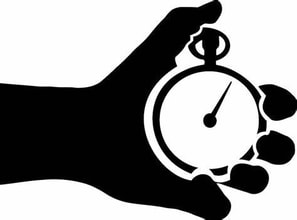 After that it is just a matter of assigning your content to the right book by pasting the ASIN into the relevant place, and then submitting the content for approval. Amazon suggests approval can take up to 7 days, but we have found that the A+ content is usually displayed on the sales page within 24 hours. Creating the images took us 10 minutes (using an existing image as our starting point) and creating the A+ content on KDP took us another 5 minutes, so this really is a quick and easy way of improving your sales page.  Aside: We used AI to create the image we have shown, and we make no apologies for that. It is the one place where we think AI can be of help to an author, by allowing them to create exciting imagery. Graphic designers may disagree with us, but we have to stick to tight budgets and AI allows us to do that.. As you apply the content to the sales page for a single market, it means you can use different content for different markets. For example, for Amazon.com you might want to use American spellings. For markets where English isn’t spoken, you can use images that use the appropriate language for the country – even if your book is only available in English. You can also use different images for different markets if you think that might affect sales. Images of scantily clad women or women with uncovered hair, for example, may not go down too well in some parts of the world. Amazon review quotes are great when included with A+ content, as shown in the image below. Firstly, the reader only has to scroll down the page a little bit to find the review from which the quote was taken. That makes the quote more trustworthy. Secondly, readers read what other readers recommend and you can't get better than a 5 star recommendation  Did using A+ content make a difference to sales? That’s hard to say. For the books where we added A+ content, we were already running advertising campaigns, so we don’t know what effect having the additional content had on sales. If the reader was responding to an ad, the A+ content may have helped to make the sale, or it may have made no difference. As we can’t get inside the mind of the readers we’ll never know. What we can say was that we started to use A+ content in June 2024 and we had our best sales ever that month. We aren’t going to try to claim a cause-effect relationship, but at the same time we don’t believe in coincidences. Maybe we got one extra sale thanks to A+ content, or maybe we got 100. Or maybe we didn’t get any additional sales and it was all down to the advertising campaigns we were running at the time. However, Amazon claims that having A+ content on a sales page can add between 3% and 10% to average sales volumes. As they are providing this facility for free, they must be making money from the use of A+ content from the extra sales or they wouldn’t be so generous. What we can say is that our A+ content added visual impact to our Amazon sales pages, and we think that is a good thing. We certainly think it is good enough to invest a few more blocks of 15 minutes’ worth of effort into the sales pages of our other books. If you have enjoyed this blog, or found it informative, then make sure you don’t miss future editions. Just click on the button below to sign up for our newsletter. We’ll even send you a free ebook for doing so.
0 Comments
 We launched a new book, “Operation Chariot”, at the beginning of June this year. Given the popularity of our “Carter’s Commandos” series of books, we expected this new title to fly off the shelf, as fans of the earlier series came back to read this new offering. We were disappointed, The new book did sell, but not in the volumes we had expected. This puzzled us because we had put a lot of time and effort into marketing the book in advance of its launch. We were sure that the thousands of readers who had enjoyed Carter’s Commandos would be thrilled by this new book. So why wasn’t it selling as well as the Carter’s Commandos series, which is continuing to do well?  We checked the data from our marketing campaign and found that we were getting plenty of link clicks to the sales page. But the clicks weren’t converting to sales. Well, not as many sales as the number of clicks suggested we should be getting. If you are familiar with our previous blogs on marketing, you will know that we have always said that if you are getting link clicks but not getting sales, it means that there is something wrong with your book’s sales page. It might be your cover, it might be your blurb, it might be the reviews, or it might be the “free sample” as Amazon now call their “look inside” feature.  We analysed each of those four things in turn to see what might be putting readers off. We quickly ruled out a problem with the cover. The cover image has been used in all our marketing, so people have seen it already and clicked on the link. That is “social proof” (as it is known) that readers aren’t being put off by the cover, so seeing it again on the sales page is hardly going to put them off buying. This applies to the blurb too. The blurb is the primary text we use in our advertising, so if people have seen the cover image, read the blurb and then clicked the link, it means that the two things have encouraged the link click, not discouraged it. Reviews are a tricky one. This is a new book. It hadn’t been read before, so it doesn’t have any reviews. We’ll have to wait for the jury to return on that but at the time of writing this blog the book has garnered 5 "ratings", all of which are 4 or 5 star. So that just left the free sample.  We clicked on it and saw immediately what the problem was. The free sample opened up on the book’s “foreword”. This was a few paragraphs intended to introduce the reader to the new series, why it had been written and the differences in writing style that might be seen by readers of the “Carter’s Commandos” series. What it didn’t do, however, was get the reader engaged with the story. To get to that the reader had to scroll through the whole thing before they got to the proper opening of the book. Why was the free sample opening on the foreword and not on the first chapter? Because KDP and Amazon’s formatting engine interpreted the foreword as a chapter. So as far as Amazon was concerned, it was displaying the start of the story. Readers, however, could see that it wasn’t the start of the story and some of them were deciding not to scroll through to find the actual start. They just went back to scrolling through whatever platform they had been on before they clicked the link.  We had lost a potential sale. Worse than that, we had paid for a link click before we lost the sale! So, what could we do about that? The answer was simple, if a little unconventional. We moved the foreword from the start of the book to after the end. We even added a short explanation to it, to say why it was at the end and not the beginning. This only affects the Kindle version, of course. The paperback version still has the foreword at the beginning where it should be. But by the time the reader has discovered that, the book is in their hands, and they can flick past it if they don’t want to read it. But the free sample is always taken from the ebook version, so paperback readers will also be taken straight into the story when they read that.  Did it change anything? Yes it did. The sales graph for the book, which had been consistent but low, suddenly took a step upwards. More copies were sold each day from that point onwards. And it cost us nothing but a little bit of time and effort to find the reasons for the disappointingly low sales and to make the changes to the manuscript. So, if your sales aren’t doing as well as the link clicks from your marketing say they should be doing, why not take a look at the book’s free sample to see if the reader is being excited by what they see on the first page, or being bored by the non-essentials that are put into the opening pages of books. If you have enjoyed this blog, or found it informative, then make sure you don’t miss future editions. Just click on the button below to sign up for our newsletter. We’ll even send you a free ebook for doing so.  Writer’s groups on social media are very popular, and quite rightly so. Writing is, by its nature, a solitary life so it is nice to know that you aren’t alone. A real life writer’s group is better, but if you don’t have regular access to one of those, social media provides a useful alternative. People use writer’s groups to seek advice on a wide range of topics: writing techniques, gaining feedback on their work and, the reason behind this blog, they seek advice on book marketing. 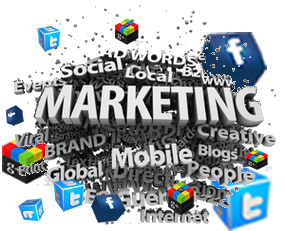 The problem with seeking advice on marketing on social media is that it as an extremely wide ranging subject and few writers have the knowledge and experience to more than scratch the surface. That means that the person seeking advice tries out a few approaches, many of them the same ones as everyone else is using, and some of the most basic techniques are by-passed because the people using social media don’t know enough about the subject.  As with any subject, you have to understand the basics if you want to understand how to apply the techniques. To use a metaphor, if you don’t know how the internal combustion engine works, you will never get as far as diagnosing a blocked carburettor as being the reason why your car won’t start. The same applies to book marketing. If you don’t understand the basics, you’ll never understand why all the things you are doing to promote your books aren’t working or, at least, not working as well as they might. As an example, some authors never get as far as understanding that using social media as a marketing channel isn't about plugging your book all the time. It's about building relationships with readers so that they want to know about your books.  As professional book marketers (that’s what publisher are, really) we contribute to those social media groups when we think we can offer good advice and we stay quiet if we aren’t so sure. One of the bits of advice we offer on a regular basis is to study marketing properly. Marketing of any product needs a wide range of skills and knowledge. Within marketing itself the professionals tend to specialise in certain areas and hardly scratch the surface in others. If they need a specialist in an area they aren’t so well versed in, they seek one out. So, for amateurs, it is even harder to know where to concentrate their efforts. 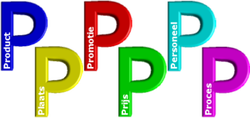 Marketing is a subject that continues to evolve. The “marketing mix” as it is known (aka the 5Ps, 6 Ps, 7Ps or even more Ps depending on who you listen to), first started to be discussed in the 1940s, long before Tim Berners-Lee came up with the idea for the internet, so marketing has had to adjust to cope with new technology while at the same time having to continue to deal with physical marketplaces such as bookshops. Take the P for People heading. This used to mean the people who sold the product – their recruitment, training, personalities, product knowledge and sales skills. But so much of our modern marketplace is now on-line, where people play almost no part in the sales. We have to hope that the website designers know what they are doing as they are now the people who influence the direct sales. The real salesperson is now the author or publisher, as they decide what words and images to use on the product page. Never before has cover design, for example, been so important in selling a book (that's covered by another of the Ps: Product). The P for People topic is now more about who reads the books – the demographics of particular genres, or “who reads what”.  If you are putting a book on the shelves of bookshops then you don’t have to worry about that so much. Books sellers have their stores laid out in subject order and people of the appropriate age, gender and interests know where to find the books they like. But if you are trying to promote a book on social media you have to know where on social media your target audience is likely to hang out. That’s the opposite of the bookshop. Which is why asking for marketing advice on social media isn’t really going to help an Indie author. Let’s face it, if you are asking a question on Facebook and it is being answered on Facebook, then the chances are that the person answering the question probably knows quite a lot about Facebook, but probably doesn’t know much about how to market on TikTok or Instagram. For the modern marketplace, the Indie author has to be almost as knowledgeable about marketing as his counterpart in one of the Big 5 publishing houses. And to become that knowledgeable requires proper study, not asking a few random questions on social media.  I’m not talking about a full 3 year course of study at a university (though it would be great if you can afford the time and money to do it), but I am talking about study of some sort (don’t worry, I’m not going to try to sell you a marketing course, because we don’t sell one). One of the owners of Selfishgenie Publishing has a Masters Degree in business management. He knows quite a bit about marketing. But when he decided to set up the company he didn’t realise how much more he was going to have to learn. In the few years that elapsed between him picking up his MBA certificate and setting up the business, the whole world of marketing had moved on. The internet was now King (or Queen if you prefer, or even President). What worked for business in the early years of the new millennium was no longer working. That meant he had a lot of catching up to do, so he did what any sensible person would do and went back to school. Not full time residential school, but part time online learning. And if you need to learn about marketing, that is what you have to do too.  Some people are reluctant to go back to school, however. We can’t understand why. You are not a failure just because you don’t know something. In fact, it is a mark of maturity to be able to admit that you don’t know some things, especially if they're in an area that you have never studied. Besides, only you know that you are studying, unless you choose to tell the world. Yes, it can cost money – but it doesn’t have to. There are organisations that provide free training and at the end of this blog we will provide a link to one of them. And you can sign up from anywhere in the world. OK, you can ask questions on social media and the answers may sell you a few books, but they will never sell you as many books as a fully developed marketing strategy, backed up by a plan and the knowledge and resources to deliver it.  That can only come from in depth knowledge of the subject. So, if you want to climb the ladder of success to become a bestselling author, we advise going back to school. For information on free online training courses in marketing, click here. If you have enjoyed this blog, or found it informative, then make sure you don’t miss future editions. Just click on the button below to sign up for our newsletter. We’ll even send you a free ebook for doing so.  One of the common questions seen in writers’ groups on social media is “How much do authors earn?” The question comes in a variety of forms, some trying to disguise the fact that the person asking the question is only interested in making a quick buck and thinks that being an author may be the way. But some people genuinely see being an author as being the road to making a decent living. Of course, for some authors, it is a way of making a decent living. Indeed, some authors become very rich through their writing. But for Joe (or Josephine) Average, the average author, is it a realistic way to make a living? We would say it probably isn’t. I’m afraid we have the data to back that up as there has been a lot of research into this over the years. 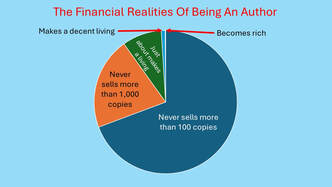 Let’s start with some basic facts. 70% of all the authors who publish or are published, never sell more than 100 copies of their books. Some of that is to do with marketing, of course. If no one knows about the book they can’t buy it. Some of it is because the books are about subjects that don’t have a wide audience appeal. They are either on very niche subjects or they are memoirs about lives that just aren’t that fascinating, but the author thought they were. Finally, they just aren’t very good books, certainly not as good as the author thought they were, and can’t garner enough good reviews to encourage people to buy them. Of the remaining 30% of books published, 70% of those won’t sell more than 1,000 copies. That’s about 21% of the total number of books published (so we’re now up to 91% of the published total). Again, the reasons are varied, and marketing once again takes centre stage, but the fact that the book has sold between 100 and 999 copies suggests it isn’t a bad book, per se. But that leaves just 9% of books published selling more than 1000 copies. However, you need to sell about 30,000 copies to make a living wage. That is to say, a wage good enough not to have to do any other work. Even then that will depend on other factors in your life such as the size of your mortgage (or amount of rent you pay), the size of your family and your lifestyle. One person’s living wage is another person’s poverty – or wealth. Less than 1% of authors make what we might regard as “decent” money and only 0.1% ever become rich from their writing. And even then, most of their wealth doesn’t come from their books, it comes from the TV and film rights for their books. So, if you haven’t written the first word of your novel, how do you know if you are going to be in the 99% or the 1%? You don’t. 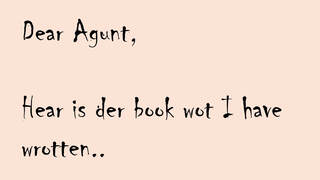 If you get as far as completing a good draft you start to get some indication of your likely success from the reaction to your work from agents, though it takes some time to gather enough data. One rejection doesn’t mean much. It just means that the agent may be too busy or doesn’t really like your genre, or just didn’t get your “message”. Ten rejections should start the author thinking a bit, but it still isn’t conclusive evidence. According to publishing legend, J K Rowling received at least 10 rejections for her first Harry Potter book. But once you get to around 20 rejections the message should be becoming clear. Even then, the message only applies to that book. Some authors query three or four books before they get one accepted by an agent. What made that book different from the first three? The author will probably say there was nothing different about it. But the agent thought it was different enough to take a chance on it, so there must have been something. 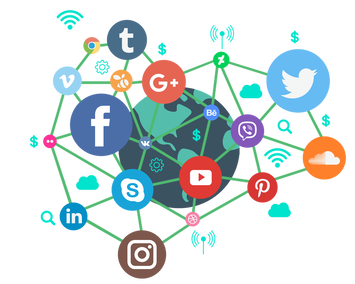 But even then the story isn’t finished, because there is a growing body of self-published authors that are making 6 digit and even 7 digit royalties. So, the agents obviously don’t know everything when it comes to what makes a best-seller. But what makes those 6 digit self-published authors different isn’t necessarily their writing. I have read some of their books. They are OK, but I wouldn’t call them remarkable. In fact, some could be described as mediocre – but they still sell. What is different is that their authors invest a lot of time, effort and (probably) money into marketing. They have become expert at it, which is how they are able to sell so many books. As a small publisher, we have seen this for ourselves. When we market a book, we sell copies. When we stop marketing it, sales dry up very quickly. Authors think that what they are paying us for is editing, cover design, proof reading, formatting etc. Sure, we do those things, but the authors could pay anyone to do those things for them. No, what we are really being paid for, and the way we make our money, is book marketing. Yes, we do the other stuff, but until the book sells we don’t make a penny and neither does the author. Marketing pays for everything. And, while trad publishers may tell you otherwise, it is in the marketing of books that they also make their money. Everything else they do costs them money. Editors, cover designers, proof readers and the rest of the publishing team, all have to be paid before the books have sold a single copy. So, if you want to make money out of being an author, you must first learn how to be a marketer. Once you know how to do that, then start writing your book. Doing it the other way around only leads to disappointment, because it takes longer to learn to be a successful marketer than it does to write a book.  And if you do that, you might just make a decent living out of writing. Even if you are certain your book is going to find an agent and be trad published, you can’t be certain that will happen. So if/when the horrible truth hits you, it is already too late. It’s fine to have a dream that one day your writing may make you rich but keep yourself grounded with the knowledge that it may not happen. And even if it does happen, it may take some time before it does. To quote Kipling “If you can dream and not make dreams your master;” If you have enjoyed this blog, or found it informative, then make sure you don’t miss future editions. Just click on the button below to sign up for our newsletter. We’ll even send you a free ebook for doing so. 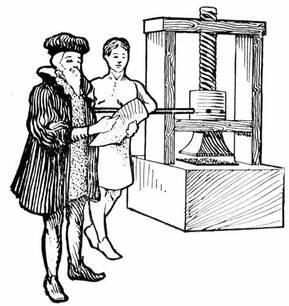 Is the game up for traditional publishers? I’m not talking about today or tomorrow. What I’m talking about may take years to come to fruition, but the publishing world is changing, and the trad publishers don’t seem to have cottoned on to the fact yet. Between themselves and agents, they have made it almost impossible to access mainstream publishing. The gate keepers are no longer just keeping the gate, they are building high walls and digging moats so deep in front of the gate that no one can get in. 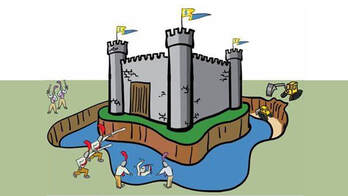 Which is why not only is the publishing model changing shape, it has no choice but to change shape. But the trad publishers are sticking their fingers in their ears and singing “la, la, la”. With so many authors now taking the self-publishing route, it is becoming the norm rather than the exception. According to this article, 300 million self-published books are sold each year. That’s 30-35% of the publishing market. While the global publishing market is expected to grow by 1% per year, the self-publishing market is expected to grow by 17% per year. 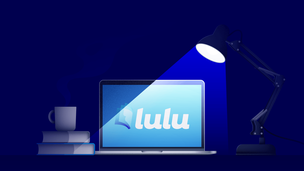 Prior to 1998, the only way to self-publish was to pay a printer to print your books, then hawk them around local book shops trying to find one to stock it for you. But in 1998 Chip Wilson, a millionaire entrepreneur, created a self-publishing website called Lulu and that all changed. Now anyone could publish their book on-line and sell it through the platform. Imitators followed and, of course, the retail giant Amazon established their own platform, Kindle Direct Publishing (KDP), which now dominates the self-publishing market. So, from almost nowhere in 1998, self-publishing now holds approximately 34% of the market – and growing. I’m not going to say that the quality of the books is 100% great, but there are plenty of good self-published authors and many make a respectable living from their writing. In fact, some make a better living than authors who are trad published. There are at least 7 self-published authors achieving 7 digit income levels and many more making 6 digit levels. 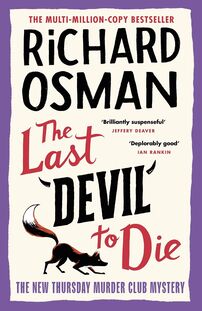 Which is one of the reasons I think there will be further shifts in the industry. A trad published author receives about 10% of the sale price of their book in royalties. From that they then have to pay their agent (actually the agent usually gets the royalty cheque, deducts their commission and then passes the rest to the author). Richard Osman’s latest best-seller is priced at £11.99 for the Kindle edition and £9.99 for the paperback at the time of writing this blog. Don’t ask me why the paperback is cheaper because I don’t know, but it probably started out being more expensive. Based on current publishing practice Richard will receive around £1.19 in royalties for the Kindle edition and around 99p for each paperback sale. If he were to self-publish and sell his book at the same price, he would make either £3.60 or £8.39 per copy, depending on whether he took the 30% or 70% royalty option. If I were Richard, I’d be starting to wonder about the wisdom of sticking with trad publishing. 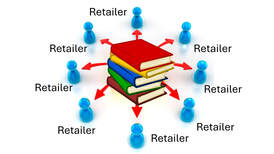 As a big name author, he would have no problem setting up distribution deals with all the major retailers, without having to rely on his publisher to do that for him. The rest is down to editing, cover design and marketing and he could hire people to do that for him. I think he’d still end up with more money in his pocket than he does now. For a start, he wouldn’t have to give between 10% and 20% of his royalties to an agent. I suspect that a lot of trad published authors will do these sort of sums in future and when their existing publishing deals come to an end, they’ll self-publish the next book they write. 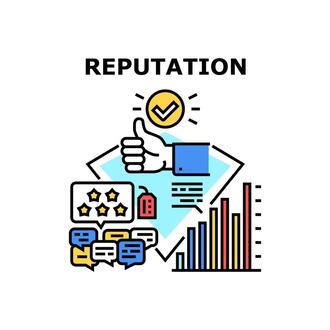 It is noticeable that publishers are now trying to tie authors into multi-book contracts in order to prevent that sort of desertion, though at the moment they are more worried about their authors being poached by other trad publishers than they are about their authors opting to self-publish. The more top quality authors who go down the self-publishing route, the better the reputation self-publishing will gain. I strongly suspect that the much of prejudice against self-published authors is being fuelled by trad publishers trying to protect their businesses.  Change sometimes happen at a glacial speed. But change can also function more like a snowball rolling down a hill, getting bigger and bigger and going faster and faster. I may not be around for long enough to see which metaphor is more accurate, but many of you will be. But I predict that one day, when a new author announces on social media that they are about to start querying their novel, the response from other writers won’t be “Good luck”, it will be “Why on Earth are you bothering with that?" If you have enjoyed this blog, or found it informative, then make sure you don’t miss future editions. Just click on the button below to sign up for our newsletter. We’ll even send you a free ebook for doing so. 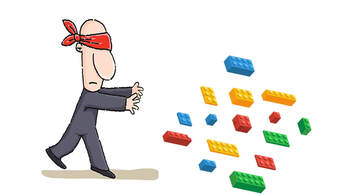 Measurement is the poor relation of marketing. While Indie authors may come to realise that they have to market their books, they don’t always realise the essential role that measurement plays in their decision making. Not knowing how to use measurement in marketing is like walking blindfolded through a room barefoot, with the floor covered with Lego bricks. At some point you are going to say “Ouch, that hurt.” Now, you may think that there is only one measurement that is worth looking at, and that is sales. But you would be wrong. To tell you why, I’d like to present you with a hypothetical scenario.  Let’s say that an Indie author has spent £100 on advertising in a month. They split that 50:50 between Amazon Ads and Google Ads. They have made sales and made a profit on their advertising, so they want to re-invest some of that profit into more advertising.
With that 3rd bullet goes supplementary questions – should they keep the split 50:50 or should they spend more on one platform than the other? The only way to make a sensible decision is to analyse the data and see what it is telling them. What the author needs to know is how many clicks each ad got, how much each click cost them and how many clicks were converted to sales.  To give you a real life example, we recently ran a Google Ad for one of our titles. According to the data we got a lot of clicks on the ad, so you might think that it was a success. However, there was no change in sales volume for the book. If the clicks had been converted into sales, there should have been a corresponding rise in sales volume. Only by putting the two sets of data side-by-side could we see that. The next month we ran an Amazon Ad for the same book. We didn’t get nearly as many clicks as we got for the Google Ad, but we did get a rise in sales. Not only did Amazon Ads tell us how many clicks got converted to sales, we could see it in our KDP sales data as well, in terms of increased sales volumes compared to the previous month. So, going back to our hypothetical example and the 4 questions (plus supplementals) we asked, we might well decide to spend all our budget on Amazon Ads and none on Google Ads. The data was telling us that, so we have no reason to doubt our decision making. 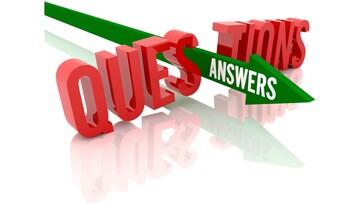 But the story doesn’t end there. If we were getting so many clicks from Google Ads, why weren’t they getting any conversions into sales? Normally we would say that it has something to do with the book’s blurb, the reviews or the free sample. Maybe they weren’t enticing enough. But if that were the case it would apply to the Amazon Ads as well, which we know wasn’t the case. So, we have to look for different answers. When we drilled down into the data, we discovered that the majority of the clicks we were getting were from outside of the UK. The book is on sale everywhere, so that shouldn’t make a difference, but perhaps it was. The book is very UK centric in its story. Perhaps that put other nationalities off buying it. We can’t be certain of that, but it is borne out by our KDP sales data. 98% of our sales for that title are made in the UK and Ireland. Again, we were putting data side by side in order to interpret it. 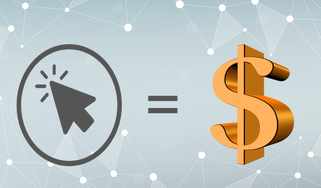 Above, we mentioned the need to understand how much each click cost us. That is essential information, because if we don’t know that we can’t know if our ad generated a profit. Let’s say we got 100 clicks and made 10 sales (that’s a fairly typical conversion rate for a new author). That sounds good, doesn’t it? According to Amazon Ads those sales would be worth £59.90 gross if the book sells at £5.99. Cause for celebration, perhaps? Actually no. Those 10 sales may have been valued at £59.90 gross, but may only have yielded £30 in royalties. If those 100 clicks cost us £35 (again, a typical cost based on 35p per click) then our ad campaign didn’t make a profit, even though it made sales. It made a loss of £5. And don’t forget that £35 is the pre-tax cost. If you are in the UK you have to add 20% VAT to get the final cost. Maybe we would need to re-think whether or not to spend our advertising budget with Amazon Ads too! Again, we have to put data side by side to interpret it and the data may have to come from different sources, eg both Amazon Ads and KDP.  Now, I’m not saying advertising doesn’t work, because it does. What I am saying is that we have to use all the available data to measure the effectiveness of our advertising. If you are spending £100 (after tax) on advertising and you are making £101 in royalties, then whoopee. You are in profit. But you have to know that and that means measuring what you are doing. So far we have only talked about paid advertising. What about social media?  Indie authors spend a lot of their time on social media promoting their books. It isn’t costing them anything except time, so no need to worry, is there? Actually, as the old saying goes, time is money (Benjamin Franklin). All the time you are on social media promoting your books, you aren’t writing new books which could make you more money. So, time has an associated cost. It is therefore necessary to work out if the time you spend promoting your books through social media is actually time well spent. Social media sites provide data on how many people have interacted with a post. That could mean a “like” or a reply, or it could be a click on a link. The more interactions there are, the more likely it is that they will convert into sales.  So, if your posts aren’t getting interactions, you need to know why, because to continue what you are doing is just going to waste your time. If you always do what you always did, you’ll always get what you always got. This may mean asking other people what they think of your posts, so you can work out what is most likely to get an interaction. Also, you need to “benchmark” against posts that get a lot of interactions to see what it is about them that makes them so attractive. 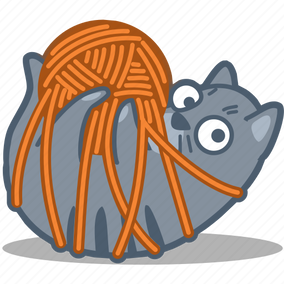 Of course, we mean posts that promote books. Knowing that posting a video of a cute kitten playing with a ball is going to get lots of interactions, isn’t going to help you to sell any books. Lots of authors think that asking questions on social media and getting a gazillion answers is interacting. It isn't. yes, the post gets a lot of responses - but is it selling books? If it isn't selling books it is just wasting time. So, some of the data that has to be compared are interactions compared to books sales. Do they line up. If not, why not? But knowing that a video gets more interactions than a still image might also be useful to know. 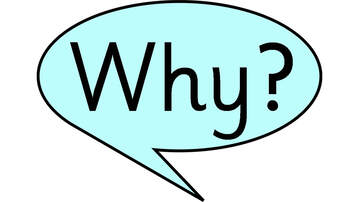 But with measurement you must always ask the question “why”. - Why aren’t my posts getting interactions?. - Why aren’t interactions on social media converting to sales? - Why aren't my video clips getting more interactions? Etc. I can’t answer those questions for you in a blog. I can’t even think up all the questions you might want to ask. But there will be answers. You just have to go looking for them. Social media sites provide all that data for free. All you have to do is use it. Measurement and data analysis isn’t very exciting stuff. But using it wisely can make your book sales very exciting. But, like all of book marketing, you have to invest time into it to get the best out of it. But it could help you avoid those Lego bricks. If you have enjoyed this blog, or found it informative, then make sure you don’t miss future editions. Just click on the button below to sign up for our newsletter. We’ll even send you a free ebook for doing so. 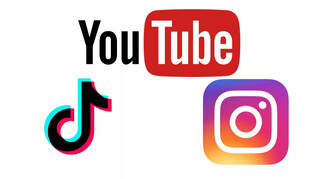 Up until now we haven’t posted much about using YouTube, Instagram and TikTok for book marketing. It isn’t because they aren’t any good for marketing. In fact, just the opposite. Those platforms are as good, if not better, than Facebook or X for selling your books. No, the reason we haven’t posted about them before is that you have to think about how you use them in a different way from other social media. Because of that we’ve been trying out different approaches of our own to see what works – and what doesn’t. Just posting an image of your book cover isn’t going to sell your book on those 3 channels. Not even making a book trailer featuring your book is going to work.  The reason why is that those 3 marketing channels work on the basis of personal interaction. What do we mean by that? After all, it is someone talking on a video. How can anyone interact with that? Well, they interact on a psychological level. The viewer sees the person in the video talking directly to them and to no one else. The video speaks to them personally. Now, there are a number of techniques that the people in the videos use and they vary according to what is being sold. I’ll illustrate what I mean with some examples. 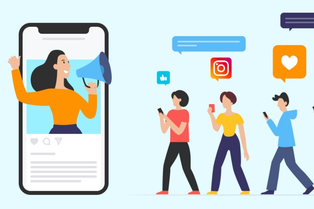 Let’s start with the “influencers”. These people make a lot of money because they sell products on behalf of brands. But they never use the word “sell”, or “buy” or make any other reference to commercial transactions. I’ll use a stereotypical influencer to illustrate: the make-up demonstrator. They open with a line such as “I want to show you this great new lipstick (or whatever) I’ve just discovered.” Of course, their tone of voice is excited. This lipstick is so great they can’t contain their excitement about it. Which gets the viewer excited because excitement is contagious. Straight away the viewer is interested because the influencer is letting them in on their new discovery, not trying to sell them the lipstick (even though they are). They are sharing a secret with them. Those are very intimate acts, and we respond to them at an emotional level. They then demonstrate their use of the lipstick, which makes them look fabulous of course, and the viewers want to look just like the influencer, so they buy the product. The influencer may not even mention where the viewer can buy the product. They’ll show them the brand name, of course, but then they’ll leave it up to the viewer to follow-up because that way they won’t feel pressured into buying. The technique isn’t new. Product demonstrators have been around almost as long as products, but in the past they were standing in front of you rather than appearing in videos on-line.  Next we have the musicians. Their technique is different. They’ll start by saying something like “This is my latest song which I want to share with you.” Again, you are being drawn into an inner circle of intimacy. They then sing a verse and a chorus. If you like the song, you then have to either buy it to hear the rest or add it to a playlist. Either way, the musician sells their music without actually selling it. 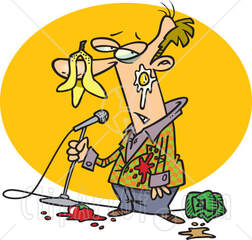 Then we have the comedians. They post video clips of their act. They make you laugh, so when they announce their next gig or their next tour, you want to go along and see them, so you buy tickets. That is more of a delayed reaction, but it means more ticket sales than if they hadn’t posted the clip. So, three different techniques for three different types of product. There are other types, but those serve my purpose in illustrating how the channels are used in different ways. 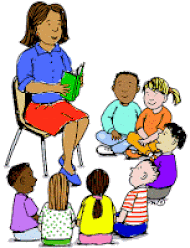 Now, how do you adapt this to suit your product – a book? With YouTube you can adopt the same technique as a musician and read an extract from your book. You don’t have to show your face if you don’t want to but setting the scene is important; use the camera to act as the viewers' eyes, perhaps finding the book on the arm of a comfy chair and settling down to read it. The voiceover then reads the extract, which you can do yourself It will probably take you a few goes to get the sort of image you want, but it will work. Put an “end board” on the video saying where it can be bought and provide a link in the video’s description along with the blurb and some suitable hashtags. If you use Canva or BookBrush (or similar packages) you can make videos of someone reading an extract. For example, if your book is set at sea you can uses a video of a seascape with you reading the extract as the soundtrack. Then promote the heck out of the video on your other social media.  Instagram and TikTok aren’t so well suited for readings. Their users have short attention spans. Anything longer than a minute probably isn’t going to be watched to the end. And anything that isn’t eye catching isn’t going to be watched at all. The first 5 seconds of the video is crucial to grabbing the viewer’s attention. This is where you have to project your personality as an author. If you try to pitch your book, you won’t sell anything. You have to pitch the idea of books in general and then mention your own books in passing. A popular style in recent months has been “Five books I wish I could discover all over again”. You don’t have to show your face, you just have to show the book covers and maybe your hands flicking through the pages. And, of course, you have to talk about why the books mean so much to you. Then you segue into how those books inspired you to write your own book, a copy of which you also happen to have in camera shot. You can talk about your own books, but you have to put a new twist on it.  People love stories. People love stories. People, especially those that read books, love stories, so use that to your advantage. One of our authors laid out his books on a table then said that not only did the books tell a story, they each had a story of their own, which was how they came to be written. He then made a separate video for each one and told the story of how he had been inspired to write it, into which he wound some of the book’s plot and characters. And it worked. Each video sold copies of the book he was talking about. But he never actually talked about the book in the way he would have in a written blurb. I would recommend going onto TikTok and Instagram and using the hashtags #Booktok and #bookstagram to see what other authors are doing on there. If your favourite authors have TikTok or Instagram accounts, see what sorts of content they post to promote their work. Remember, imitation is the sincerest form of flattery. Identify the sorts of videos that make you feel good about the author and their products, not the ones that are trying to pitch books directly to you. Emulate the former, not the latter. 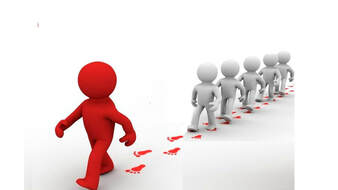 Unlike X or Facebook, these channels aren’t about how many followers you have. Your videos will be shown to users based on what they like to see, so it doesn’t matter if they follow you or not. If they are using any of the hashtags that relate to books or reading, there’s a good chance your video will be shown to them if you have used related hashtags, including genre hashtags Of course, if they follow you that’s a bonus, because it means they will definitely see your videos in the future. But that isn’t as important as it would be on X or Facebook. Once again we must add a “health warning” that using YouTube, Instagram and TikTok isn’t going to turn you into a best selling author overnight. But they can add additional strings to your marketing bow. Experiment and have fun. You have nothing to lose except for a bit of time. 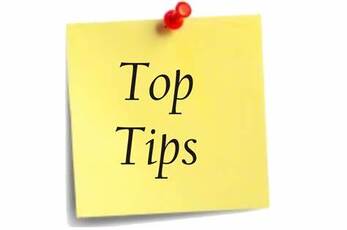 Just a few tips for you. Make sure that any book titles haven’t become reversed during the recording process. I recently watched some TikTok videos by an author I follow and in a couple of them her book titles appeared as “mirror images”. This is a common problem when using the camera in “selfie” mode and holding the book up in front of your face (try it if you don’t believe me). If you have friends who read your books, ask them to do video reviews for you on TikTok or Instagram, making sure they use suitable hashtags, including your author name. Vary your styles and themes. If all the videos you post look the same or sound the same, people will lose interest. 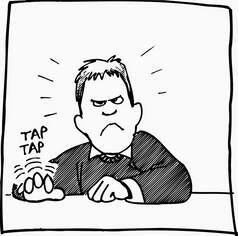 Be patient (yes, that old one again). If you are just starting out on these channels it will take time for people to find you and to share your videos. But they will if you give them long enough. Post as frequently as possible. Yes, it’s a big time commitment to keep on making new videos, but anything worth doing is worth investing the time into doing it. Use "dead time" to make videos, eg when commuting, coffee breaks, lunchtime etc. For those of you who have never used these platforms, here are some links to helpful videos on how to use TikTok. Most of what they say can be applied to YouTube and Instagram too. TikTok Beginner’s Guide https://www.youtube.com/watch?v=rjjjlJw2cgM How to make TikTok Videos https://www.youtube.com/watch?v=vAho-cr5UxY 10 Mistake TikTok users make https://www.youtube.com/watch?v=nrY9HpJd6zE Hashtags https://www.youtube.com/watch?v=xcZHGr_xpII If you have enjoyed this blog, or found it informative, then make sure you don’t miss future editions. Just click on the button below to sign up for our newsletter. We’ll even send you a free ebook for doing so.  I read a post in a writers’ group on Facebook recently that said that the author had done their “research” and come to the conclusion that there were just two approaches to marketing a book. Approach One was to plug your book relentlessly on social media. Approach Two was to make sure you get your keywords right, a good cover, a snappy title and a top notch blurb so that your book would show up in searches and sell that way. The person who made the post had decided he was going to put all his eggs in one basket and just pursue one of those approaches. I’ll not say which in case it influences you to do the same, which is not the objective of this blog. In fact, the objective is exactly the opposite.  Like this shape, Marketing is multifaceted. Like this shape, Marketing is multifaceted. I’m not going to say that either of those two approaches are wrong in themselves. What I will say is that narrowing things down to just one of two approaches is like saying there are only 2 ways to cook eggs (I can think of 6 without breaking sweat). Marketing, like any discipline, is multi-faceted. Tossing a coin and saying that only one option will be taken is like taking a binary view of any activity. It rules out more than it includes and what it rules out is valuable. Good marketing is analogue decision making, not binary. Using social media to plug a book is important to an Indie author. First of all, it is all some authors can afford because everyone can afford free. Secondly it raises the author’s profile, even if it is only amongst a limited size group of people. Finally, it can actually sell books if done the right way. But having the right keywords, cover, blurb etc is also essential. Keywords get the book found in searches. But they don’t sell the book. Once the book has been found, the cover attracts attention, the blurb increases the reader’s curiosity, and the sale is around 70% made. 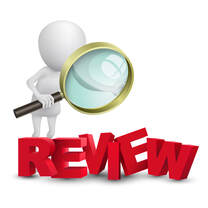 But it is either the reviews or the free sample (sometimes both) that actually sells the book. Reviews because people will buy what other people have liked and the free sample because it allows the reader to decide if the book lives up to the expectations raised by the blurb and the cover. But that assumes that the book appears high enough up in the search results. There can be no doubt that Amazon ranks search results by popularity. At the top of Page 1 of the results is always the “sponsored” books, the ones that authors or publishers have paid to be there. Then you usually get the best-sellers in the genre because Amazon knows that they are money makers. The rest of the results can be spread over many pages and there is no way of knowing how far readers will go through the results before they buy their next read. Yes, your book will be there if you used the right keywords, but they may be on page 100. 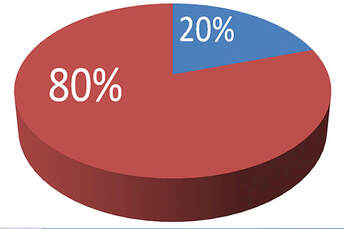 I suspect it’s going to be one of those 80:20 things. 80% of all books that will be purchased will appear on the first 2 or 3 pages of results and only the remaining 20% of sales will be made on subsequent pages of results, with the percentage declining the further you go through the pages. I have no evidence to support that, BTW, but intuitively it would seem to make sense. So, if you want to be in that 80% you have to do something else to make that happen. And that falls outside the second approach described above. To get your book into the 80% you have to find some way of marketing the book that doesn’t depend just on search results. You have to find a way of getting the reader to go looking for that book specifically, rather than doing a search. And that means finding a way of getting the reader to click on a link so that they go to exactly the right page for the book.  So, we’re back to social media. Yes and no. Social media is just one route that can be taken. We’ve already mentioned paid advertising as a way for readers to find a book the reader didn’t even know they wanted to buy. We use it and it pays for itself many times over. But for people who have a more limited budget that isn’t always a viable route to take (but check it out because it’s probably cheaper than you think). When you use social media and search results together, you start to harness the best of both worlds. It isn’t an either/or situation. It is a “both in the right place” situation. Then you can add in things such as email lists, promos, blogs and so much more.  I could list all the approaches that we at Selfishgenie Publishing use, but you would end up reading all day and you probably aren’t up for that. Scroll down to read the blog we posted a fortnight ago, because that says a bit more about what successful book marketing involves. Suffice to say – there is more than one way to skin a cat and using several ways, at the right time and in the right way, is always going to produce better results than just limiting yourself to one approach (apologies to animal lovers, but it’s just a saying. No animals were harmed in the writing of this blog). That is why marketing is such a time consuming activity for the Indie author and if you aren’t prepared to commit the time, you are always going to get disappointing levels of sales. One of the most frequent questions Indie authors ask about marketing their books is “Which is the best place to market my book?” The answer to that is so subjective that there simply is no answer. 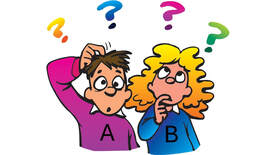 Just because Author A had huge success using Platform X, it doesn’t mean that Author B will have the same success if they also use it. This is why you have to know your readers, especially when it comes to using social media. For example, TikTok is used a lot by younger people. Now, don’t get the idea that it is only used by them, because older people use to too. But if you want to reach younger readers, then you are better off using TikTok than using, say, Facebook. Many women find X (formerly Twitter) too hostile for them, so if you want to reach a female audience you would be better off using Instagram or perhaps Pinterest, where more women tend to hang out. And that is why Author A may be having more success and why Author B won’t because their readership is different and therefore their readers’ social media habits are different.  There are even some readers who don’t use social media at all, or the internet for that matter (I know, weird, huh?) so reaching that group of people is going to be really hard, which is where book fairs and other real world forums fit into the equation. I’m not saying you have to be everywhere, all the time. You would have to be superhuman to do that. But you do have to think in terms of being in more than one place at any time. This is why real research is so important. You have to know where the majority of your target readership hangs out and when they hang out there, so that you can be in the same place at the same time. For example, there is little point in targeting YA audiences between 9 in the morning and 4 in the afternoon, because they will be in school or college. You have to target them in the evening. So, what would we like you to take away from this blog? 1. Book marketing is not a binary choice. It is multifaceted. 2. Taking multiple approaches to marketing covers more bases, which means it is likely that you will sell more books. 3. Know where (and when) to find your readers, so your readers can find you. If you have enjoyed this blog, or found it informative, then make sure you don’t miss future editions. Just click on the button below to sign up for our newsletter. We’ll even send you a free ebook for doing so.  Books don’t sell themselves. They have to be marketed and learning how to market a book effectively can be time consuming. It can also be expensive, especially as there are so many sharks out there who would like to take your money but not give you very much in return. But you can kick start your marketing efforts by following our top 10 marketing tips for self-published authors. 1. Make time for marketing The one thing every successful indie author can tell you is that marketing takes up a lot of time. But the same authors will also tell you that if you don’t put enough time into marketing, you will never sell any books. Or at least, you won’t sell many. 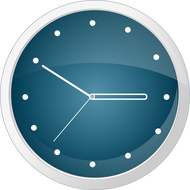 If your dream is to become a best-selling author, you also have to become a good book marketer. But marketing doesn’t stop when your book has started selling. If you stop marketing, the sales will stop too. This is pretty much a lifetime commitment. You need to spend a minimum of an hour a day marketing your books. That can be more than doubled in the early days or when you have a new book coming out. Yes, it’s a lot. There is no tip in this list that makes marketing any less time consuming. No indie author, even ones who are good at marketing, became an “overnight success”, so you also have to learn to be patient.  Patience isn’t just a virtue – it is an essential. That isn’t something people want to hear in today’s “instant gratification” world. But if you try marketing for a week, get no results and stop because you think it isn’t working – well it won’t work. It wasn’t the marketing that failed, it was the lack of patience that caused the failure. It is said in the marketing industry that buyers have to have 7 “touches” of a product before they buy it. A touch is any sort of exposure to the product and includes seeing marketing messages on-line It takes time for those 7 “touches” to happen. You could be lucky and get them within a few days, or it could take weeks, months or even years. But the more marketing you do, the more “touches” the readers will get and the quicker it will be for you to make sales. 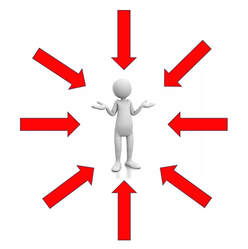 2. Use multiple approaches to marketing. Using one approach to marketing may bring you some results, but using several different approaches will produce even better results (which is why marketing is so time consuming). People respond to marketing in different ways. Some will respond to direct advertising, but others would rather die than click on an ad. Which is why you need to use multiple approaches to reach different people. By using all the different approaches listed below, in combination and at different times, you will tap into several of the different ways that people respond to marketing. We promoted this blog as the “top 10 tips”, but that doesn’t mean that there are only 10, so be prepared to research some of the ones we haven’t mentioned. Our past blogs are full of other approaches, and they can be found in our blog archive. 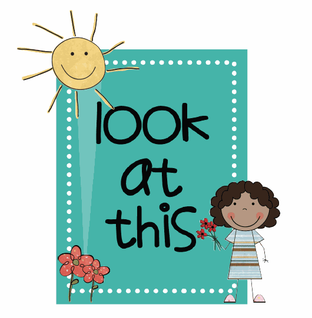 3. Cover The book cover is the first thing the reader sees and it does quite a lot of heavy lifting when it comes to marketing. It has to attract the reader’s attention at the same time as it tells them about the genre of the book. Spend some time looking at other authors’ book covers, especially the best sellers in your genre. What have they got in common? But most of all a book cover has to look professional – even if it was created by an amateur. If you can design your own covers using Canva or BookBrush (other graphics packages are available) and make them look professional, then that ‘s great. But if you can’t it is worth spending a little bit of money to get the right cover for your book. But beware. There are lots of “designers” out there and they don’t all do a good job. Also, the book covers they show on their profiles may not actually be their work. Seek recommendations from other authors, because they have trodden this path before and may be able to point you in the right direction. 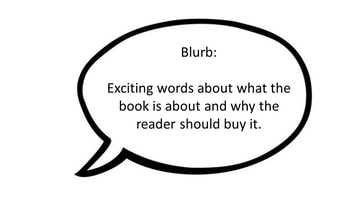 4. Blurb This is the other bit of marketing that does a lot of heavy lifting. So many books don’t sell because their blurbs are just snores-ville. Don’t try to describe your book in your blurb. You’ll never do it justice. Instead describe how exciting/entertaining/dramatic/thrilling/romantic/funny your book is. The first sentence has to hook the reader. It doesn’t matter how good sentences 2, 3 and 4 are. If the reader isn’t hooked by the time they get to the first full stop, those other sentences won’t even be read. We have covered blurb writing in previous blogs and there are lots of other blogs out there on the subject. READ THEM. 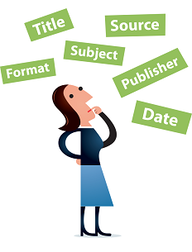 5. Metadata Meta data is all the stuff that you enter on the first page of whatever publishing platform you use for your book. Author name, title, subtitle, description, category (or categories), keywords etc. All this information is important because it is the way your book will be found when readers do searches for books to buy. Your metadata has to include words that will match up with their search terms. Pay particular attention to the category in which you place your book, because if you put your book in the wrong one, you may as well hide it at the back of a cupboard because it will never be found by the readers who read books like yours. On social media we see a lot of authors saying “you can’t fit my book into any category, it’s a cross between X, Y, Z and something new and original I created.”  This is wrong. Their book has a central theme, and that central theme is the category it belongs in. If ever there was a time to “pick a team”, this is it. One “team” will always be better for your book than the others and you have to work out which it is. Do some research! Do searches on etailing sites to find the categories that other authors in your genre are using. You will find the information in the “product description” section on Amazon. Who are the big-name authors in your genre? Take a look at the categories where their books are listed because that is probably where yours should be listed too. If you get your metadata wrong your book won’t show up in search results. If you get it right it will. Maybe not on the first page, or the second page or even the third but it will be in the results somewhere. The better the match between the search terms and the metadata, the higher it will be. When it comes to keywords, do more research. Don’t just try to guess them, try them out to see what sort of search results you get. Use incognito browsing so you don’t get offered your own books or books like the ones you have bought in the past. If you don’t get books like the one you’ve written, then the keywords aren’t the right ones to use for your book.  6. Social media presence The important thing about social media is that it is social! In years gone by, being on social media was a great place to promote your books for free. However, so many authors are now using it for that purpose that readers now tend to just scroll past book promotions. That doesn’t mean you don’t have to bother with social media. But it does mean that you should use it more to build relationships than you do for promotion. And we do mean real relationships, ones that involve conversations. Asking random questions in order to get lots of responses is not a relationship and it isn’t a conversation. Finally, don’t focus on attracting writers, focus on attracting readers. Yes, writers will support you and give you “likes”, but they aren’t the people you need to be talking to if you want to sell books. Readers, on the other hand, are always looking for new books to read. (yes, we know that writers also read books, but there are many more readers than there are writers). How do you identify readers? By starting conversations with people. We recommend Facebook, X and Pinterest. We don’t recommend Instagram, TikTok or similar. But we may be wrong so if you think you can make them work for you, then give them a whirl. 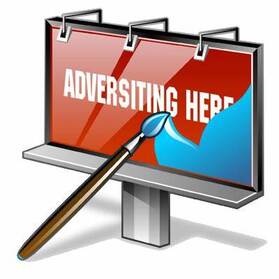 7. Advertise It pays to advertise, that’s why big corporations spend so much money on it. And it can pay back for indie authors too if they do it the right way. The wrong way is to pay on-line book promotion sites to blast out X or Facebook posts and to “feature” your books on their websites. The posts are ignored and the website entries get lost in the crowd. Use the outlets that have been proven to work for other authors. For us this is Amazon and Pinterest. Both platforms are used by people who want to buy something, so the battle is half won before you start. All you have to do after that is to learn to use them effectively. We have sold books using Facebook advertising, but Amazon Ads and Pinterest have both been more successful for us. I have provided some links to resources at the end of this blog. For Amazon, once you have seen their videos, I would recommend undertaking Bryan Cohen’s “5 Day Author Ads Challenge” where he teaches authors how to use Amazon’s algorithms to get better results for less money.  8. Your own website Having your own website isn’t for everyone and if you don’t think it is going to be your thing, that’s fine. However, if you do decide to get a website, or you have one already, it is useless if you can’t get people to go to it to look at your books. You need what are called “reader magnets”. There are two things you can put on your website to attract readers. One is complete short stories that can be downloaded for free. The second is free extracts of your books, with links embedded to take the reader to the complete book so they can buy it when they have finished the extract – assuming they liked the extract, of course. Blogs can be a reader magnet – if you are reading this it is because we drew you in with our magnet – but they take a lot of time to write, especially as you need to post new blogs regularly. If you are considering getting your own website, wait until you have at least 3 books published. The cost can’t be justified if you only have one book to sell. But remember, your website is like your book. Nobody is going to trip over it by accident. Use the other marketing tips in this blog to get people to visit your website or you may as well not bother having it. If you don’t want a website, at least have a Facebook page dedicated to you as an author. Keep it separate from your personal page and use it like you would a website.  9. Price Promotions Price promotions are a great way to kick start sales of a new book, by reducing the price of a previous book. Putting your book on sale for a low price can attract sales, boost you up the sales rankings and get you reviews. However, they won't earn you much in the way of royalties, so you have to strike the right balance. Where price promotions really work is by reducing the price of an existing book and using it to promote the new book. Make sure that you include an extract of the new book in the reduced price book to entice people to buy it. This may mean having to change your ebook’s MS and re-publishing, but that doesn’t take too long. This tactic works very well if you put the new book on “pre-order”, which allows you to generate interest before the actual release date. Your pre-order sales all show up in the sales rankings on the day the new book launches, and they catapult you upwards. We do give away free books from time to time, but we don’t recommend it as a major marketing tool. Free books tend to be downloaded by people who only want a free book. They often don’t result in subsequent sales. Free books don’t feature in sales rankings, so they have no impact in those terms, though they may provide you with a few more reviews. It is better to discount the price of the book for a period. Amazon allows you to do this for 5 days at a time if your book is enrolled in KDP Select, but even if it isn’t, you can reduce the price on the book’s set-up pages on KDP as long as you don’t go below the minimum price that Amazon sets. Draft to Digital allows you to generate Smashwords coupons for discounts up to 100% and you can publicise these through your social media. But special offers are only special if they are for a limited time. Keeping books listed at a discounted price for a long period reduces the impact they have.  10. Learn how to market effectively. We should probably have made this the No 1 tip, but if we’d done that you wouldn’t have read the rest of the blog. There is no substitute for learning the skills necessary to do any job. Exactly the same applies to learning how to market your books. The biggest selling indie authors aren’t the ones who have published the best books. They are the authors who have learnt how to become good at marketing. You can write a mediocre book (we've read some of them) and still become a best-selling author by learning how to market. You can also write the best book ever written and it will never sell because you didn’t learn to do your own marketing. Your book, your rules. All we can say is that we sell books because we market relentlessly, and we are always trying to learn new marketing skills. We have included a link below to direct you to a website where you can get some training for free to get you started. 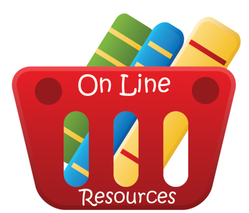 Resources One blog won’t make you a marketing expert, so here we list some resources you can tap into to help you with your marketing. Marketing training. FutureLearn offers free training wherever you are in the world. Search their site for a wide range of marketing courses. You can complete one in a day if you put your mind to it. Using Pinterest for marketing: Beginners use this link, more advanced users should use this link to find out how to use it for business (and selling your book is a business) Amazon advertising: watch their videos to learn how to use their ads platform. To learn to use Amazon Ads more cheaply and effectively, try Bryan Cohen’s 5 Day Author Ads Challenge. This is the Facebook page to find out when the next challenge starts. They usually run once every 3 to 4 months. 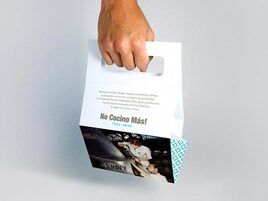 What to take away from this blog There are two key messages that we hope you will take away from this blog: 1. Marketing is the only way an indie author can ever sell more than a handful of copies of their books. 2. Learning how to market is the only way to make marketing work for you. If you have enjoyed this blog, or found it informative, then make sure you don’t miss future editions. Just click on the button below to sign up for our newsletter. We’ll even send you a free ebook for doing so. 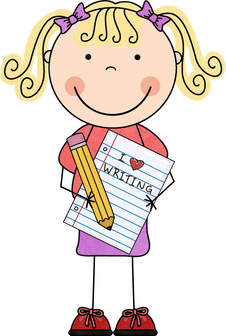 There was a recent kerfuffle amongst Indie authors on X/Twitter when a well-known, trad published, author (I won’t name her, the posts are all there if you want to look) suggested that Indie authors take the “easy route” by self-publishing. She actually said it on Instagram or TikTok, or one of those platforms, but the kerfuffle was on X/Twitter. Naturally, this is not a view we share. And we are pretty sure that it isn’t true anyway. I know for a fact that Selfishgenie Publishing wasn’t the first choice for any of our authors. Nor were we their second choice, or their third. In fact, if we made it into their top 100 choices we would feel quite proud. Those authors came to us because they felt they had nowhere else to go. It most certainly wasn’t an easy choice for them to make, we know that. Our authors came to us for three reasons:  1. We were willing to give them a chance. 2. We were able to provide skills that they didn't have. 3. Unlike vanity publishers, we didn’t make any upfront charges for our services. Now, you may be wondering why, as publishers, we lump ourselves in with Indie authors. It is because that in many ways we function in exactly the same way as the indie author functions. We may be publishers, but we are also authors ourselves. Our company exists because we started doing for other people what we were already doing for ourselves. And, just like many other indie authors, self-publishing wasn’t our first choice. But it wasn’t really a choice we made for ourselves anyway. It was made for us by others. For many self-pubbed authors, there is a three step process. Let’s just go through it to see if it rings any bells. 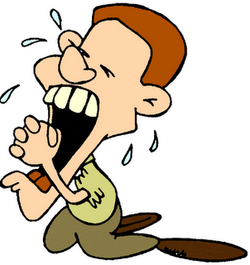 Step One – Querying. Sending out queries to agent after agent and getting knocked back every time. How many letters are sent and over what time scale varies from author to author, depending on their resilience. But in the end the author finally admits that it isn’t going to happen for them and stops sending out query letters. The decision to do that isn’t one the author makes voluntarily. The author has just come to the realisation that none of these agents are going to offer to sign them, so it isn’t actually a decision at all.  Step Two – Pitching to smaller publishers. There are some smaller publishers that accept submissions direct from the author, not via an agent (they do accept submissions via agents as well, of course). After working through the lists of publishers who will accept those submissions and once again getting knocked back every time, the author once again realises that those publishers aren’t going to sign them. Again, the decision isn’t really being made by the author. It is being made by the publisher. The author is just accepting the reality of their position. Let’s face, getting a trad publishing deal is a numbers game. Using the old iceberg analogy, it is only the authors that represent the tip of the iceberg that get a publishing deal. The vast majority that sit below the waterline don’t get one. They are probably around 95% of all authors writing today. They can’t all be bad. In fact most of them are pretty good. 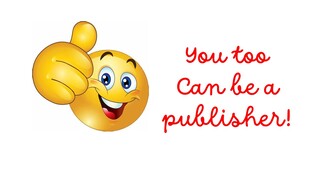 Step Three – Self Publishing. When the author decides to self-publish, they are making a choice. The alternative is not to publish their work at all and, sadly, some authors do make that decision. Their talent will be forever lost to readers simply because they are worn out from trying. So, what part of steps one and two were easy, do you think? Is it easy to get rejection after rejection? No, it isn’t. Every rejection feels like a dagger through the heart. Is it easy to get back on the horse and try again, and again, and again? No, it isn’t. Yet we kept sending out those queries, even though we knew we would get more stab wounds. 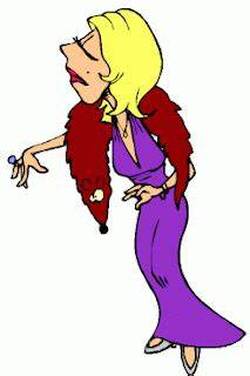 The author who thinks it is easy to go self-pubbed is speaking from a highly privileged position. They got their agent before their resilience ran out. They got their publishing contract. Every time they submit a new MS to their agent, they know that the agent is very likely to go into raptures of appreciation for it, because they know that another pay-day is approaching. And when the agent puts the MS forward to publishers, they know there is a very high probability that it will be accepted for publication. That is privilege indeed. But, apparently, we Indies are the ones who take the easy route. So, what does that easy route look like? Aside from getting stabbed repeatedly, of course. 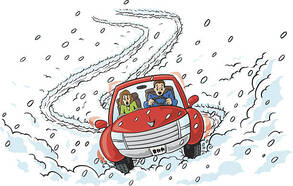 Learning new skills, that we never imagined we would ever have to learn when we first sat down to write our book. Not writing skills - we knew we might have to learn a few of those. No, we have to learn to edit, to proofread, to format, to use new platforms so we can upload and distribute our books. We have to learn how to spot the fakes and the scammers who want to take our money. But most of all we have to learn how to market our books. This really is the biggest challenge for the author. Nobody is going to buy a book they don’t know exists and marketing is the way we get the book out in front of readers so that they know about it.
So, how can any of that be the easy option? The only easy option is to not market the book and accept that it isn’t going to sell.  I suspect that the author in question, like so many trad published authors, simply has no idea what an Indie author actually goes through, or the amount of work they have to do, not just today, but every day until they either give up or they die. If that is the case then they should understand the risks of talking about things of which they have no knowledge. They should also be aware that they are perpetuating the prejudice that being self-published is somehow second rate. It isn’t. We are self-published because no agent or publisher would take a chance on us. That doesn’t mean our work isn’t any good. Agents and publishers want guaranteed best sellers. There is no room for risk in that equation and new authors are risky. 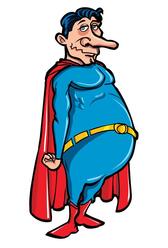 We know that because quite a few authors do get book deals with trad publishers, but when their book doesn’t sell as expected, the publisher drops them. And when the publisher drops them, so does their agent. And they end up here with us indies. But we also know our books are good because, providing we get the marketing right, we are able to sell our books. And some of us even sell them in quantities that some trad published authors can only dream about. So, to all you indies out there, we want to tell you that you are our heroes. You are the people we admire. We admire you far more than we admire trad pubbed authors, because we know what it has taken for you to get where you are today. Because we have travelled the same road and we know how hard the journey is. We wish you well. Keep fighting the good fight. If you have enjoyed this blog, or found it informative, then make sure you don’t miss future editions. Just click on the button below to sign up for our newsletter. We’ll even send you a free ebook for doing so. |
AuthorThis blog is compiled and curated by the Selfishgenie publishing team. Archives
June 2025
|




 RSS Feed
RSS Feed